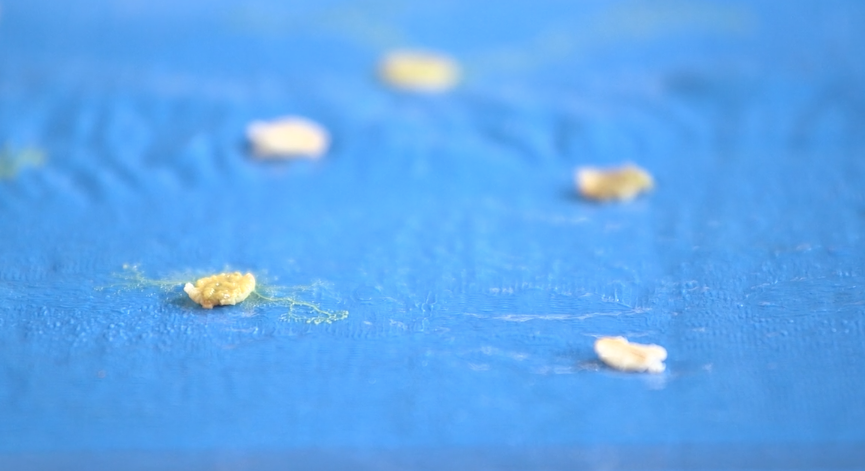
Slime mold and three-dimensional maps could provide key information for urban planners in traffic-prone Los Angeles, according to a Loyola Marymount University study released today in the international journal Peer J.
LMU associate biology professor Demian Willette, working with other science and engineering faculty members and students in the Frank R. Seaver College of Science and Engineering, took a novel look at the efficiency of Los Angeles’ freeways using a simple, puzzle-solving organism.
As part of their study, “Investigating Los Angeles’ Urban Roadway Network from a Biologically Formed Perspective,” the researchers placed oat flakes (slime mold food) at key nodes across a scaled-down 3D map of downtown Los Angeles. Within three days, they observed how the slime mold grew and branched out over the map of downtown L.A. in search of the food.
The team found that the mold – when presented with real-world topographic features – identified pathways on average 65 kilometers shorter than existing downtown roadways.
“We can learn a lot from biology,” Willette said, acknowledging some of the challenges and threats facing the city of Los Angeles, such as traffic congestion, earthquakes and wildfires.
“How are we trying to solve these problems that we’ve had for decades and decades? How are we trying to be more resilient?” he asked. “I think that this technology opens the door in terms of how we’re addressing these problems.”
The researchers concluded that biologically inspired design – including this rapid and inexpensive method of coupling slime with 3D print technology – should be considered in future urban planning discussions and when re-envisioning how L.A. moves. And it could also have applications in planning evacuation routes during disasters such as earthquakes and wildfires.
In addition to Willette, the study’s contributing authors are: Sophia Deen, Tatiana Kuzmenko and Hossein Asghari. Watch a video about slime mold here.



